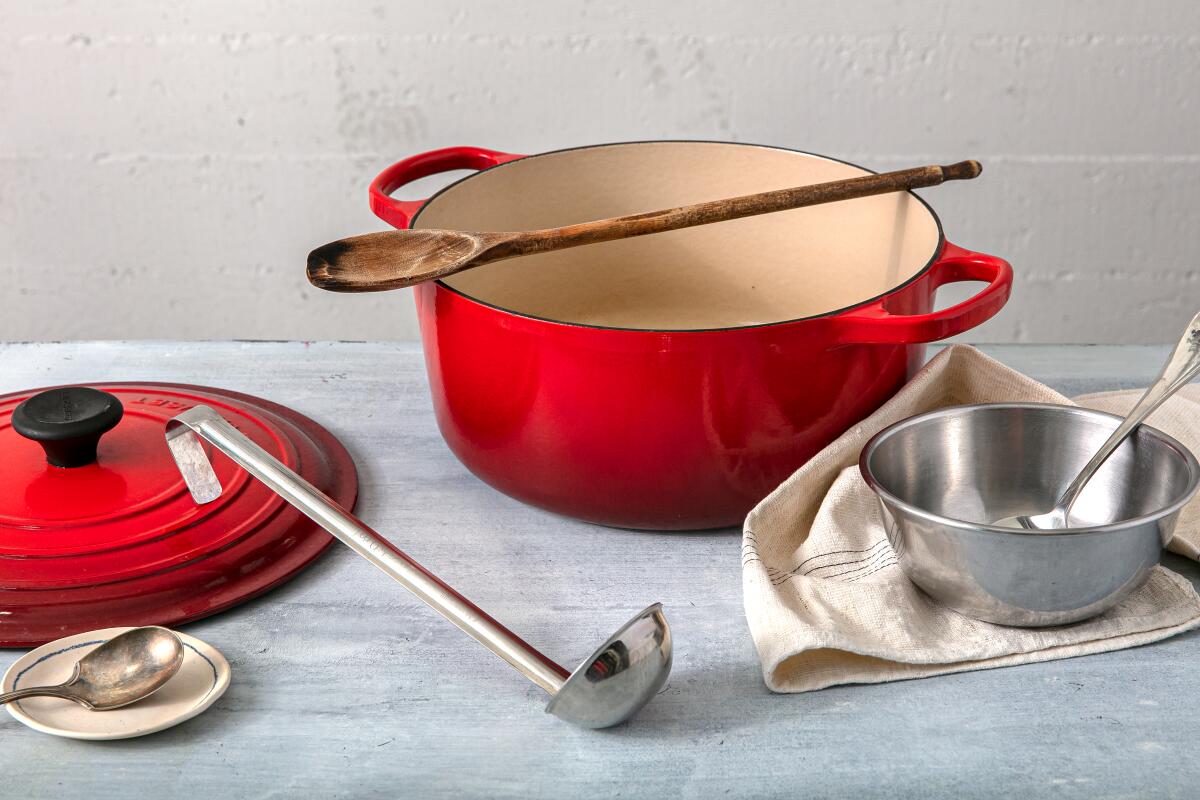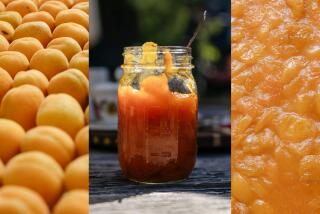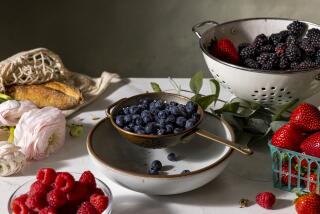The only equipment you need to make jam

This story is a component of the feature âSeasons of Preserves: Stone Fruit,â which is part of a four-part series on preserving fruit at home called âL.A. in a Jar.â
Before you go shopping or bring the fruit home, make sure youâre prepared with the proper equipment. Jam-making may bring to mind visions of sterile metal objects and lots of clunky factory equipment, but the truth is, if youâre not canning the preserves (and Iâd advise you not to at first), you only need a couple of things.
The one essential is a great pot. Iâve used stainless steel pots and enameled cast iron pots (Dutch ovens) equally and while both work great, the latter is more preferable for its ability to spread the heat across the bottom of the pot, which helps the jam cook evenly.
Because making jam isnât worth it unless youâre making a large enough batch, always start with at least 3 to 4 pounds of fruit and cook it in a âlarge,â approximately 7- to 8-quart-or-so, pot. Whatever pot you use, make sure it has tall sides (at least 5 inches) because boiling jam likes to increase in height and splatter. And if youâre cooking in a shallow pan, it can spill over if you donât keep a close eye on it.
I like to use a large, long-handled heat-proof silicone spatula or wooden spoon to stir the fruit. The long handle keeps my hand away from stinging-hot fruit juice and the wide blade of the spatula scrapes the bottom of the pot efficiently. Donât use a metal spoon though, since the heat of the jam can travel up the handle of the spoon and burn your hand â trust me on this.
Speaking of hands, while itâs not essential, I recommend gloves. There will be a splattering of fruit juice, and itâs a good idea to avoid boiling hot sugar and juice on your skin. I use a pair of thick (clean) heat-proof gloves meant for gardening, but you can also use some classic yellow dishwashing gloves if you have them (just know that the latter is only good for protecting from splatters; theyâre not heat-proof so donât go grabbing boiling hot jars with them).
In addition, youâll want to keep a small bowl of cold water and a spoon nearby for skimming the surface of the jam and a ladle ready for decanting the jam into jars or whatever vessel in which you want to store it.
But before you start to cook, youâve got to weigh everything youâre using, so make sure you have a good digital scale. If you bake a lot, youâre likely to already have one, but if not, you should get one. Weighing the fruit and other ingredients is more accurate and will allow you to measure, mix and cook everything in one vessel. Less equipment to clean and a better jam? Sounds like easy math to me.
More to Read
Eat your way across L.A.
Get our weekly Tasting Notes newsletter for reviews, news and more.
You may occasionally receive promotional content from the Los Angeles Times.











